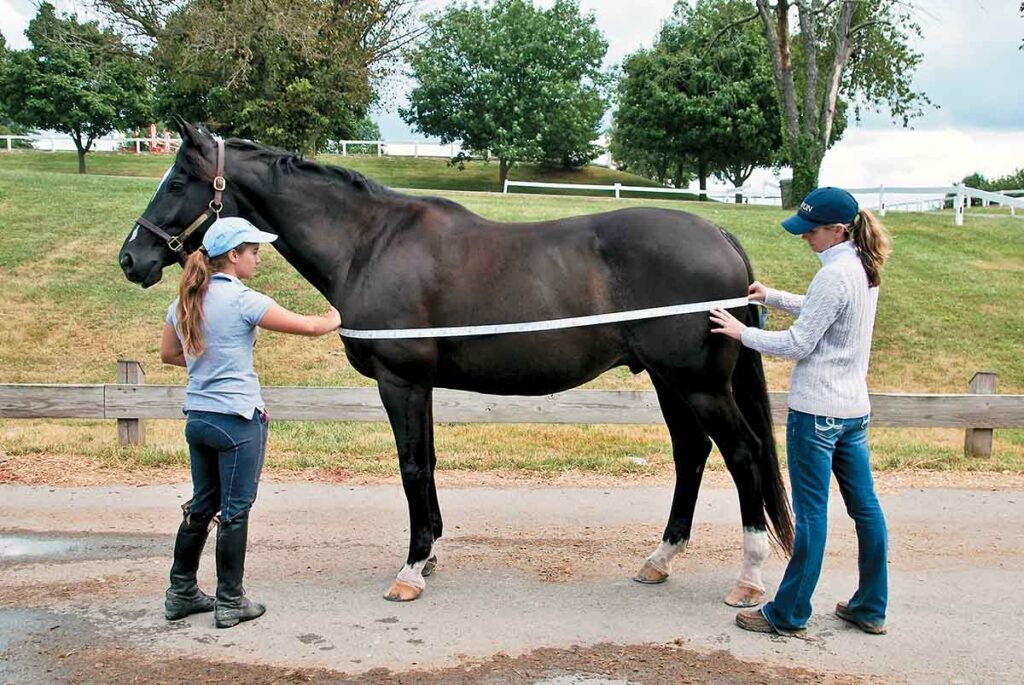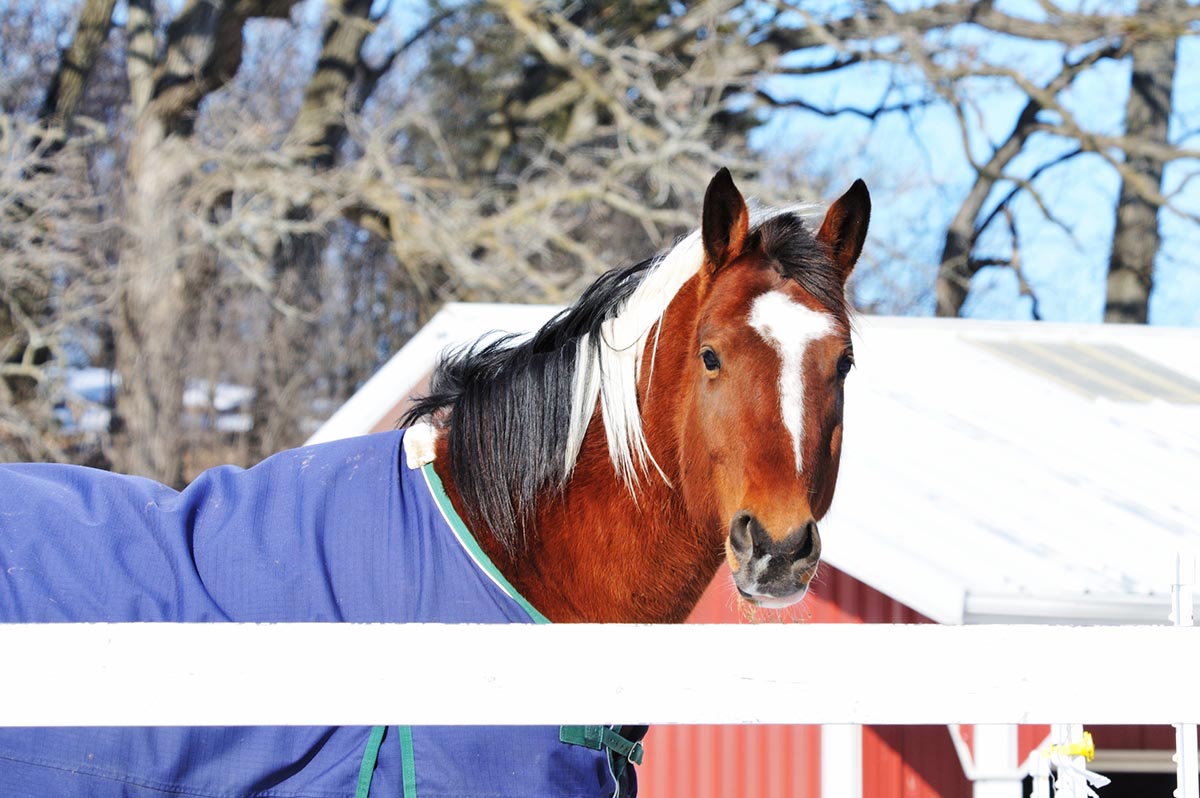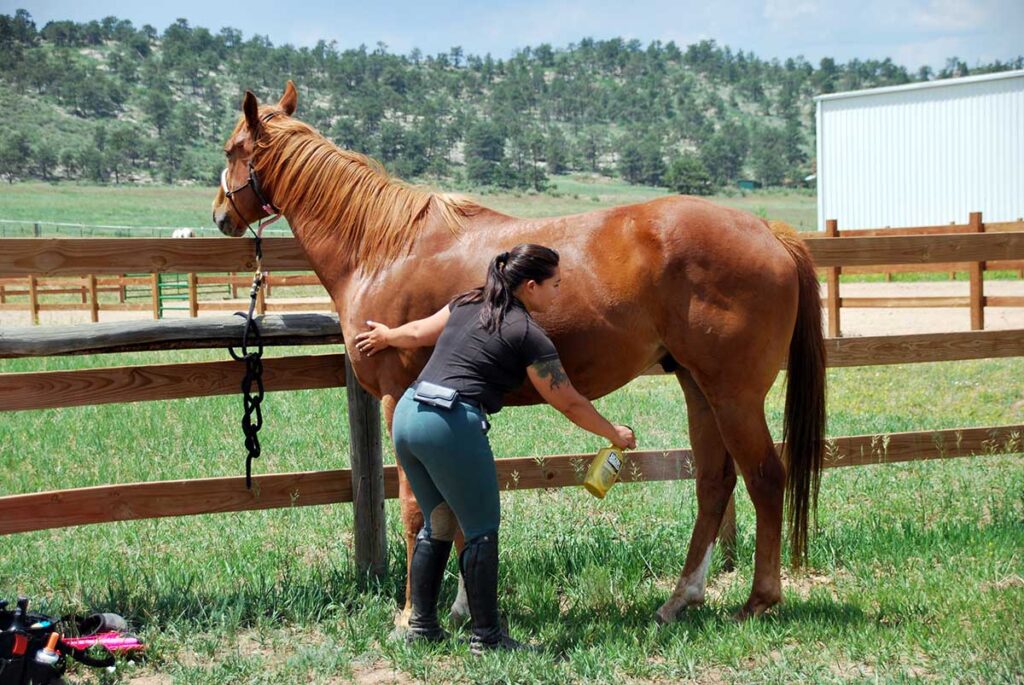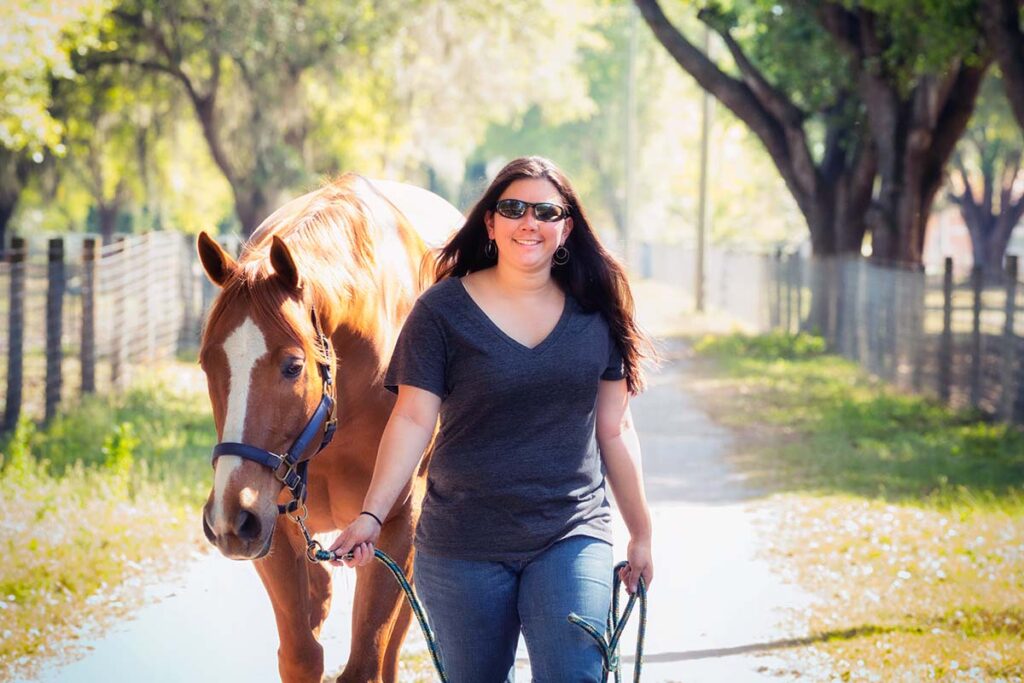The concept is simple: When your horse is cold, put on his blanket. When he’s not cold, take it off. If he’s got a nice thick coat, skip the blankets altogether. This daily winter chore, however, remains an enigma for many. Here’s a quick guide to blanketing a horse, including when, how, and with what to blanket.
Does My Horse Need a Blanket?
In a nutshell, probably not. Horses’ bodies are pretty well-equipped to handle even frigid temperatures. You’ll notice that as the days start to get shorter and the nights cooler, their coats begin to change and grow. Healthy horses with nice full coats, body condition scores of at least 4 on the 1-to-9 scale, and access to some form of shelter might only need a blanket if temperatures dip below 10 to 0°F.
If you ride your horse enough through winter to warrant trace or body-clipping, then you need to provide him with some protection from the elements. Below is a chart to refer to when making blanketing decisions for both clipped and unclipped horses. Which blanket, if any, you choose depends on the thickness of your horse’s coat, whether he’s turned out or stabled, the presence of precipitation or wind, and his age and health status.
| Temperature | Unclipped | Clipped |
| Above 50 F | no blanket | no blanket or just a sheet |
| 40-50 F | no blanket | sheet or lightweight |
| 30-40 F | no blanket, or only a lightweight | mid- to heavyweight |
| 20-30 F | no blanket, or only a light- to midweight | heavyweight |
| 10-20 F | mid- to heavyweight | heavyweight, plus a sheet or liner |
| Below 10 F | heavyweight | heavyweight, plus a sheet or liner and neck cover |
What Size Blanket Does My Horse Need?

To calculate your horse’s blanket size:
- Stand him square.
- Place one end of a measuring tape in the center of his chest, just below the spot where the neck joins the body.
- Recruit a helper to pull the tape around the chest and the widest part of the shoulder and along the side of the horse’s body to the point of the buttocks, about 10 inches below the tailhead.
- This length in inches will correlate to your horse’s blanket size.
While blanket sizes are pretty standard, there might be slight differences between brands. Check the blanket manufacturer’s sizing guide to find out.
What Type of Blanket Does My Horse Need?
Blanket manufacturers categorize their blankets according to insulation factor as light-, mid-, or heavyweight to cater to a wide range of temperatures and management factors. Typically, the greater/heavier the fill, the warmer the blanket. Most manufacturers provide guidelines as to which of their blankets you should use in what circumstances, but here’s a general guide to common types:
- Sheet. Horses can wear these versatile, very lightweight blankets in mild weather, in layers under thicker blankets, or to stay clean in the barn.
- Lightweight. These blankets help provide warmth on cool fall and spring days. The fill is typically around 100 grams.
- Midweight. These blankets are a good starting place if winter temperatures don’t fluctuate much or dip too far below freezing. Their fill is typically around 200 grams.
- Heavyweight. These blankets should be reserved for bodyclipped horses and those living in extreme winter climates. Their fills can be 300 to 400 grams—or more!
Deciphering Blanket Jargon
Here are some common terms you might encounter when shopping for blankets:
Cordura: This tough, mildew- and water-resistant synthetic nylon is popular for turnout rugs.
Denier: This measure of nylon fiber density indicates a blanket’s durability and water resistance. The higher the denier, the hardier it is. Look for a denier upward of 1200 in turnout rugs.
Gusset: These pleatlike triangles of fabric sewn into the shoulder area of your horse’s blanket allow more freedom of movement.
Hood: Body-clipped horses, competition horses, or horses living in extreme winter climates might benefit from a hood or neck cover for extra warmth and/or even hair growth.
Lining: Blanket linings are made with a variety of materials, such as cotton, nylon, and mesh. Cotton or poly linings are warm and absorbent, while mesh, for instance, is cool and breathable.
Liners: (different from linings, which are built-in) These also come in a variety of weights and fill materials.
Surcingle: Most blankets have two or three of these straps that run beneath the belly to help hold the blanket in place. Metal clasps attach them to the side of the blanket.
Weight: The amount of polyester fill, by grams, the blanket offers as insulation. Fill can range from 0 grams in a lightweight blanket to upward of 400 grams in heavyweights.
How Do I Avoid Static Shock When Blanketing a Horse?
Dry winters can make blanketing pretty electric. Apply a fabric softener or static guard to your blankets, or use a dryer sheet designed for babies or sensitive skin to smooth the horse’s hair before hoisting on his blanket. If your horse allows it, put the blanket on and off over his head, rather than dragging it over his body.
How Do I Prevent Rub Marks?
Buy a blanket that fits! You should be able to easily slide your hand under the blanket and up the shoulder. If it pinches or is tight in this area, it will probably start to rub. Blanket liners and shoulder protectors will also help prevent rub marks.
Take-Home Message
If you decide to blanket your horse this winter, make sure it fits, and pull it off every day to give your horse a once-over and ensure he’s in good body condition.
This article originally ran on TheHorse.com.
Are you enjoying this content? Sign up for My New Horse’s FREE newsletter to get the latest horse owner info and fun facts delivered straight to your inbox!








